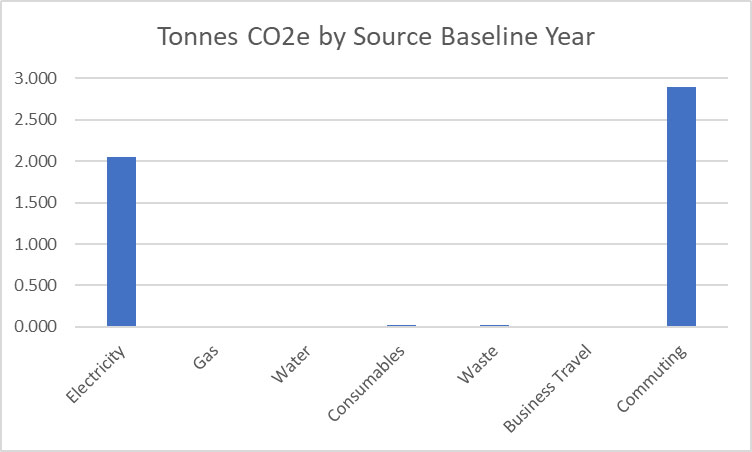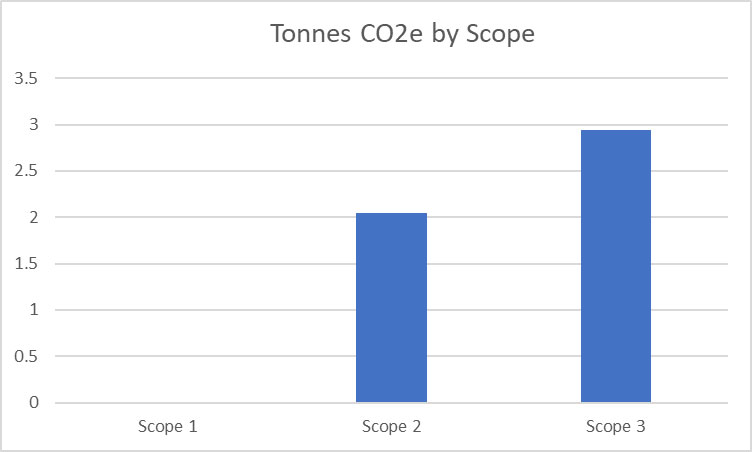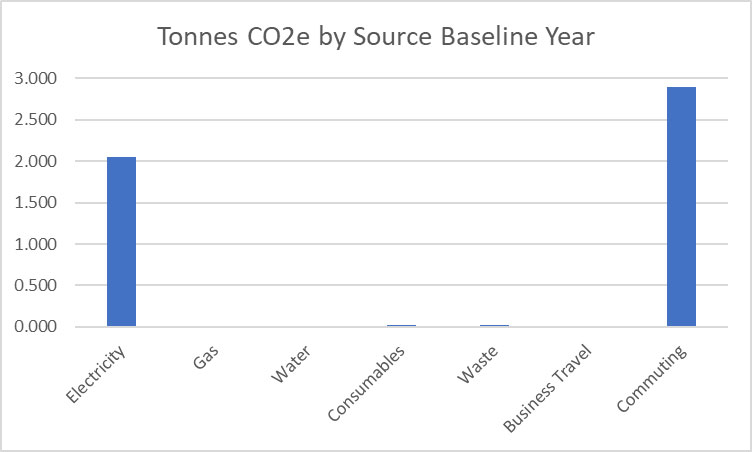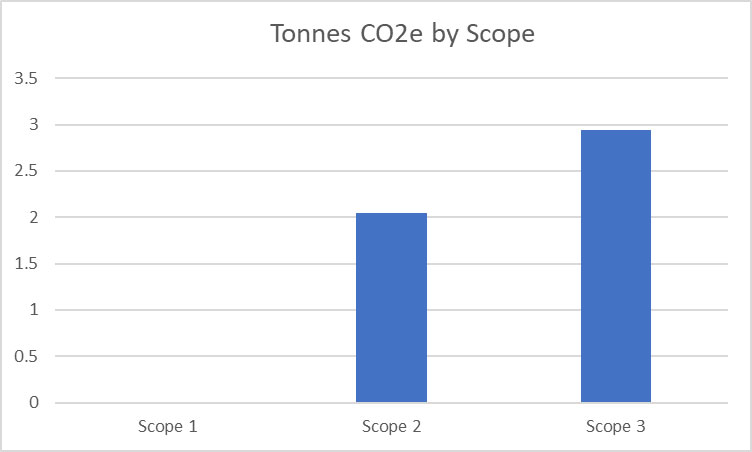Carbon Reporting and Reduction Plan
Baseline year August 2021 to July 2022.
Reporting Year August 2022 to July 2023.
1. Introduction
Solos Consultants Ltd has committed to reducing its carbon emission to Net Zero by 2035, using as far as possible direct reduction, and offsetting the remainder.
We do this because we are conscious of the environmental, social and economic imperative to act on climate change.
The UK Government amended the Climate Change Act 2008 in 2019 by introducing a target of at least 100% reduction in the net UK carbon account (i.e. a reduction of greenhouse gas emissions when compared to 1990 levels) by 2050. As a result, Central Government Departments, their Executive Agencies and Non-Departmental Public Bodies are required to ensure that suppliers to contracts with an annual value of in excess of £5 million (excluding VAT) per year are committed to achieving “Net Zero by 2050” for all procurements after 30th September 2021.
This has led to PPN 06/21 which applies to all new procurements from this date and this includes framework call-offs and Dynamic Purchasing Systems where the anticipated individual value of the call-off or DPS is £5 million (excluding VAT) per annum or more. To demonstrate compliance, we have set out
- Confirming our commitment to achieving Net Zero by 2050 for our UK operations.
- Details of our carbon footprint/current emissions for the sources included in Scope 1 and 2 of the GHG Protocol and a defined subset of Scope 3 emissions.
- Providing emissions reporting of the CO2e (Carbon Dioxide Equivalent) for the greenhouse gases covered by the Kyoto Protocol (predominantly carbon dioxide, methane and nitrous oxide).
- Setting out the environmental management measures we have adopted including specific carbon reduction measures.
- Publication of our Carbon Reduction Plan on our website.
2. Scope 1, 2 and 3 Emissions Definitions
Scope 1 Direct Emissions – these are direct greenhouse gas emissions that occur from sources that are controlled or owned by us (e.g. emissions from boilers, vehicles etc).
Scope 2 Energy Indirect Emissions – these are indirect greenhouse gas emissions associated from the purchase of electricity, heating or cooling and are measured and reported in alignment with our energy use.
Scope 3 Other Indirect Emissions – these fall into 15 categories and include all sources not specified within Scopes 1 and 2 above. The Scope 3 emissions that we are required to report on are:
- “Upstream” transportation and distribution of products purchased by us from Tier 1 suppliers (e.g. paper, computers, office consumables).
- Disposal and treatment of waste generated in facilities not owned or controlled by us.
- Transportation of employees for business related activities in vehicles not owned or operated by us.
- Transportation of employees between home and work in vehicles not owned or operated by us including in their own vehicles.
- “Downstream” transportation and distribution of products sold by us including retail and storage. This category is not applicable as Solos Consultants is a service business and does not produce, transport or distribute products.
3. Carbon impact for the baseline year Aug 21 – July 22
The tables below show our carbon footprint in our baseline year August 2021 to July 2022 when we first started measuring our emissions.
| Baseline Year: | Aug 21 – Jul 22 |
|---|---|
| Baseline Emissions Calculations: | All Scope – tonnes CO2e/ year |
| Scope 1 CO2e: | 0 t |
| Scope 2 CO2e: | 2.044 t |
| Scope 3 CO2e (included sources): | 2.942 t |
| Total Emissions: | 4.986 t |
3.1 Carbon emissions by source.
| Tonnes CO2e / yr | |
|---|---|
| Electricity | 2.044 |
| Gas | n/a |
| Water | 0.005 |
| Consumables | 0.024 |
| Waste | 0.017 |
| Business Travel | 0.000 |
| Commuting | 2.896 |
| Total | 4.986 |

3.2 Carbon Emissions by Scope

4. Carbon Impact for the Current Reporting Year – Aug 22 to July 23
The tables below show our carbon footprint in our reporting year August 2023 to July 2023.
| Current Year: | Aug 22 – Jul 23 |
|---|---|
| Baseline Emissions Calculations: | All Scope – tonnes CO2e/ year |
| Scope 1 CO2e: | 0.00 |
| Scope 2 CO2e: | 2.305 |
| Scope 3 CO2e (included sources): | 2.898 |
| Total Emissions: | 5.202 |
4.1 Carbon emissions by source
| Tonnes CO2e / yr | |
|---|---|
| Electricity | 2.305 |
| Gas | 0.000 |
| Water | 0.005 |
| Consumables | 0.024 |
| Waste | 0.004 |
| Business Travel | 0.000 |
| Commuting | 2.865 |
| Total | 5.202 |

4.2 Carbon Emissions by Scope

5. Analysis of current year against baseline year
| Total emissions T CO2e | Carbon intensity T CO2e per employee |
|
|---|---|---|
| Baseline year | 4.986 | 0.831 |
| Current year | 5.202 | 0.867 |
5.1 Analysis
There has been a small increase in emissions from electricity use due to great consumption for the period. There has been a small reduction in emissions from staff commuting resulting from a minor error in the baseline year calculation.
6. Carbon Assessment Observations
Solos Consultants operates from one office in Nottingham. The following observations were made by an external assessor on 10th August 2023.
- The carbon intensity ( tonnes CO2e per employee) is higher than average (c. 0.5 t) for the sector (see part 6). This is driven by the high carbon electricity source, and the use of cars for commuting.
- Some car journeys appear to be very short, and therefore could be undertaken by active travel means.
7. Carbon Reduction Commitments /Actions
Solos Consultants is committed to achieving Net Zero by 2035 and as part of this commitment, has an interim targets of reducing emissions by 2025. This plan is reviewed annually by the Directors to check progress and establish if changes should be made to the actions we have in place to maximise our reduction in carbon emissions.
The basis of our Carbon strategy is one of Measure – Prioritise – Act – Measure – Repeat.
8. Measurement
We report on the sources of environmental impact over which we have operational control and calculate our carbon footprint quarterly, in accordance with the Greenhouse Gas (GHG) Protocols Corporate Standard and report against the Kyoto Protocol greenhouse gasses in terms of:
- Actual targets – absolute reduction targets which compare actual figures in the target year to those in the base year.
- Intensity targets – based on a normalising factor.
We subscribe to a third party service to manage our data inputs, conduct the required calculations, set and record our intensity metrics, and provide quarterly carbon reporting. The data that sits behind this is the UK Government Greenhouse Gas reporting database, updated when appropriate.
This provides us with our emissions by source, and total emissions by quarter, sets our intensity metrics and shows how we are tracking quarter-on-quarter.
Our chosen intensity metrics are kg/CO2 per employee.
For the baseline year therefore, our Carbon Intensity is:
| Intensity tonne CO2 net | ||
|---|---|---|
| Employees | 6 | 0.867 t / employee |
Our base year for all measurements is Aug 21 to July 22 This will not change unless there is a significant change to our company structure (e.g. a merger or acquisition) or a change in the company’s ownership, in which case the base year may move to the reporting year following the structural change.
Specific inputs and output used to calculate figures quoted in our Carbon Reduction Plan include:
- Electricity
- Water
- Solid waste
- Employee commuter mileage by type – walk / cycle / motorcycle / car / bus / train
- Business travel by private car / bus / rail
- Office consumables
Conversion Factors
The conversion factors used throughout are the ‘2021 UK Government Greenhouse Gas Conversion Factors for Company Reporting.
9. Prioritise
Our quarterly carbon calculation has enabled us to identify the largest sources of GHG emissions, and to focus our areas of impact. That does not imply however that we are not implementing actions across the board. We have been able to identify quick and easy wins which relate to relatively low impact areas whilst also implementing longer term multi-facet strategies for the larger emission areas.
10. Action Plan
9.1 Communication
We have successfully communicated our Net Zero ambitions across our workforce, and have formed an employee task force. This task force is charged with identifying where our staff can affect carbon reductions through behaviour change.
We will report our carbon emissions and progress against target to our employees quarterly, via a display at our offices.
We have developed a communication plan which describes our ambitions and commitments to our key customers and suppliers, and in our general communications.
9.2 Electricity
Electricity is one of our highest sources of carbon emissions and is a significant operating cost.
- Renewable Electricity Purchase – we will strive to source our electricity from a 100% renewable energy source. We are sub-metered by our landlords, so this may not be straightforward, we will work with them to find a solution. This action will halve our annual carbon emission.
- Lighting use – conduct an ongoing campaign to encourage users to turn off lights when not required or rooms are not in use. Otherwise, install further proximity controls or timers to lighting.
- Lighting type – Make it policy to only replace failed units with the lowest energy types available, currently LED.
- IT equipment – make it policy that all IT equipment is turned off (not stand-by) when not in use – lunchbreaks, meetings and out of hours. Otherwise, configure the technology to do this automatically. Noted that some software platforms may not be compatible at present with this policy.
- Heating Use and Controls – ensure that the provision of heat is optimised to where it is needed most, that employees know how to uses timers and thermostats, and that they are set to only provide heat when needed, reduce the overall level of heating whilst maintaining comfort
9.4 Water
- Emissions from incoming water and disposal are minimal. Nevertheless, it is a business cost which can be reduced through a behaviour change programme to minimise wastage, and where applicable, through technology i.e. using low flush toilet cisterns if not already in use.
9.5 Waste
- This is another low impact area, which will arise primarily from waste paper and card. A behaviour change programme to reuse paper, print on both sides, only print when necessary will not only reduce the waste disposal emission, but the external emission associates with paper production and printing.
9.6 Commuting
How employees travel to work is Scope 3 emission, meaning that it is outside the direct control of the business. Scope 3 emission reporting is mandatory under the new Government Agency procurement requirements.
For Solos Consultants, commuting represents a significant carbon impact.
- Implement a Cycle-to-Work scheme. This is a tax incentive for employees to purchase new bicycles for commuting purposes. The cycles are bought and owned by the business, and their cost is offset against the employees Gross pay. Safety equipment, luggage carriers and wet weather clothing can also be included. Commuting by bike is perfectly safe, and easily achievable for journeys up to ten miles. The company will need to consider the provision of safe and secure cycle storage, and maybe the provision of showers and changing facilities.
- Active travel – cycling or walking – has multiple physical and mental health benefits. Regular active travel commuters are more productive, happier, and have fewer absences. The company should promote these health benefits, and establish an active travel culture amongst employees. Establishing peer support where, for example, established riders support new riders, have optional competitive elements – fastest average walking or cycling speed, or most miles travelling in a week, the setting of personal targets etc all help embed the culture.
- Encourage the use of public transport.
9.7 Office Consumables.
We have considered paper and printer cartridges here as the primary measurable consumables for the type of activity conducted at Solos Consultants.
- Use only recycled paper, and ask employees to only print when absolutely necessary, to print on two sides.
- Ink cartridges have a surprisingly high carbon footprint. Their impact can be minimised by ensuring that empty cartridges are returned to a specialist recycler, rather than disposed into general waste, and that trials be run to assess whether third party second use cartridges may be suitable. Note that their performance and compatibility can be patchy, but that the market is well served.
11. Carbon Reduction Trajectory
We have set emission reduction target by source as percentage reductions against the baseline year for 2025 as an interim, and 2035 as achieving Net Zero (with offsetting in place).
| 21-22 | 2025 | 2035 | |
|---|---|---|---|
| Electricity | 2.044 | 0.000 | 0.000 |
| Water | 0.005 | 0.005 | 0.005 |
| Consumables | 0.024 | 0.023 | 0.022 |
| Waste | 0.017 | 0.016 | 0.016 |
| Business Travel | 0.000 | 0.000 | 0.000 |
| Commuting | 2.896 | 2.606 | 2.346 |
| Total | 4.986 | 2.650 | 2.388 |
By 2025, we have reduced our electricity based emissions to zero through renewable energy sourcing, and made 5% reductions in our consumables and waste emissions, and a 10% reduction in commuting emissions.
By 2035, we have made further 5% reductions (from 2025 figures) in our consumables and waste emissions, and a further 10% reduction in our commuting emissions.
Therefore, by 2035, according to this trajectory, we have made carbon reductions to 48% from our baseline year, with the remaining Carbon footprint to offset 2.388 t / year to achieve Net Zero Carbon.
12. Audit
Whilst not compulsory, we have committed to an annual audit of our carbon data reporting, by an independent third party.
13. Offsetting
Offsetting the emissions that we can’t mitigate will become part of our strategy, but only at the point that we’ve implemented all of the possible behavioural, process and technology changes.
Carbon offsetting is an unregulated market, and has suffered some negative publicity due to exaggerated claims on carbon savings. We also note that the UK market has little capacity at present.
We will take expert guidance to identify a credible and verifiable carbon offsetting scheme, that nay be UK or Overseas based.
14. Declaration
This Carbon Reduction Plan has been completed in accordance with PPN 06/21 and associated guidance.
Emissions have been reported and recorded in accordance with the published reporting standard for Carbon Reduction Plans, the GHG Reporting Protocol Corporate Standard and we use the appropriate Government emission conversion factors for greenhouse gas company reporting.
Scope 1 and Scope 2 emissions have been reported in accordance with SECR requirements and the required subset of Scope 3 emissions have been reported in accordance with the published reporting standard for Carbon Reduction Plans and the Corporate Value Chain (Scope 3) Standard.
We confirm this Carbon Reduction Plan is reviewed and signed off at board level on an annual basis and is available on the home page of our website.
Name: Lee G Witts
Job Title/Designation (must be a director or equivalent):
Date: 11/08/2023






